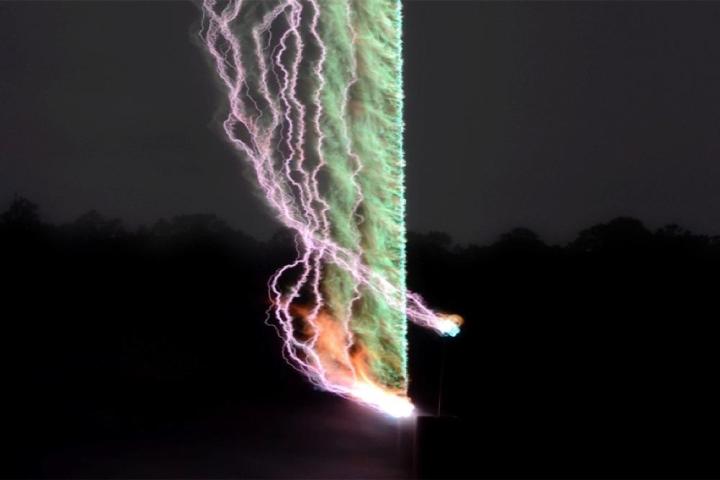
You’re probably scratching your head, wondering how one could possibly photograph sound. Last year, at a U.S. military base in Gainesville, Florida, scientists triggered lightning by shooting a rocket into thunderstorm clouds. Florida is known for having the most lightning strikes in the United States, making it a perfect place to conduct the experiment. The scientists were then able to capture the acoustic energy emanating from the lightning strike, allowing the researchers to “see” thunder and further understand the mechanics of how thunder and lightning work.
Maher Dayeh, an atmospheric scientist at the Southwest Research Institute’s (SwRI) Space Science and Engineering Division in San Antonio, Texas, conducted the experiment at the University of Florida’s International Center for Lightning Research and Testing, situated at Camp Blanding; SwRI collaborated with the University of New Hampshire, University of Florida, and Florida Institute of Technology on the experiment. It marks the first time scientists have been able to capture thunder as a long-exposure image with detail, which Dayeh and his team presented at a joint meeting of American and Canadian geophysical societies on May 5.

“Lightning strikes the Earth more than four million times a day, yet the physics behind thid violent process remain poorly understood,” Dr. Dayeh says in a SwRI release. While we understand the general mechanics of thunder generation, it’s not particularly clear which physical processes of the lightning discharge contribute to the thunder we hear.”

With the thunder image, scientists can learn more about how it originates. Besides the rocket, Dayeh and his team create an array of microphones in a technique called ranging, for determining the source of the sound. At first, Dayeh thought the experiment failed after seeing a “colorful piece of modern art.” But after looking at the image at a higher frequency, he was was able to see the “distinct signature of thunder.”
As for the next test, the scientists would like to re-create or study a more natural-occurring lightning bolt, as an artificially triggered one comes down in a straight line, as oppose to zigzagging. Dayeh told Nature that this would help them understand how energy flows along various branches of lightning, but he isn’t sure when this will happen.
Editors' Recommendations
- Oppo Find N, the first foldable phone from Oppo, is ready for prime time
- Strange radio burst discovered in Milky Way for first time, source identified
- The first black hole ever photographed is ‘wobbling,’ scientists say
- Scientists image the progression of a solar flare for the first time
- Hubble scientists find new way to measure the age of star clusters


